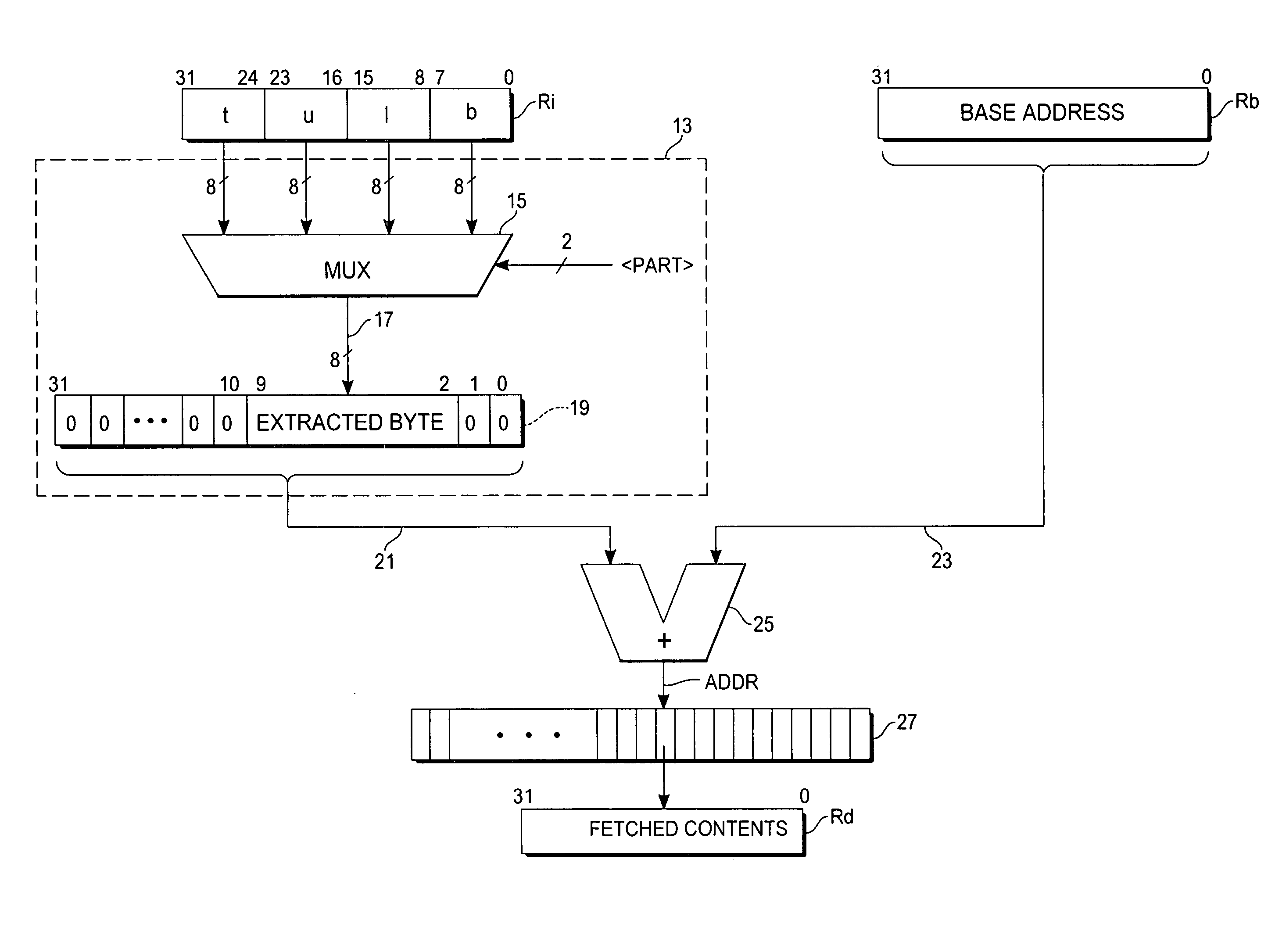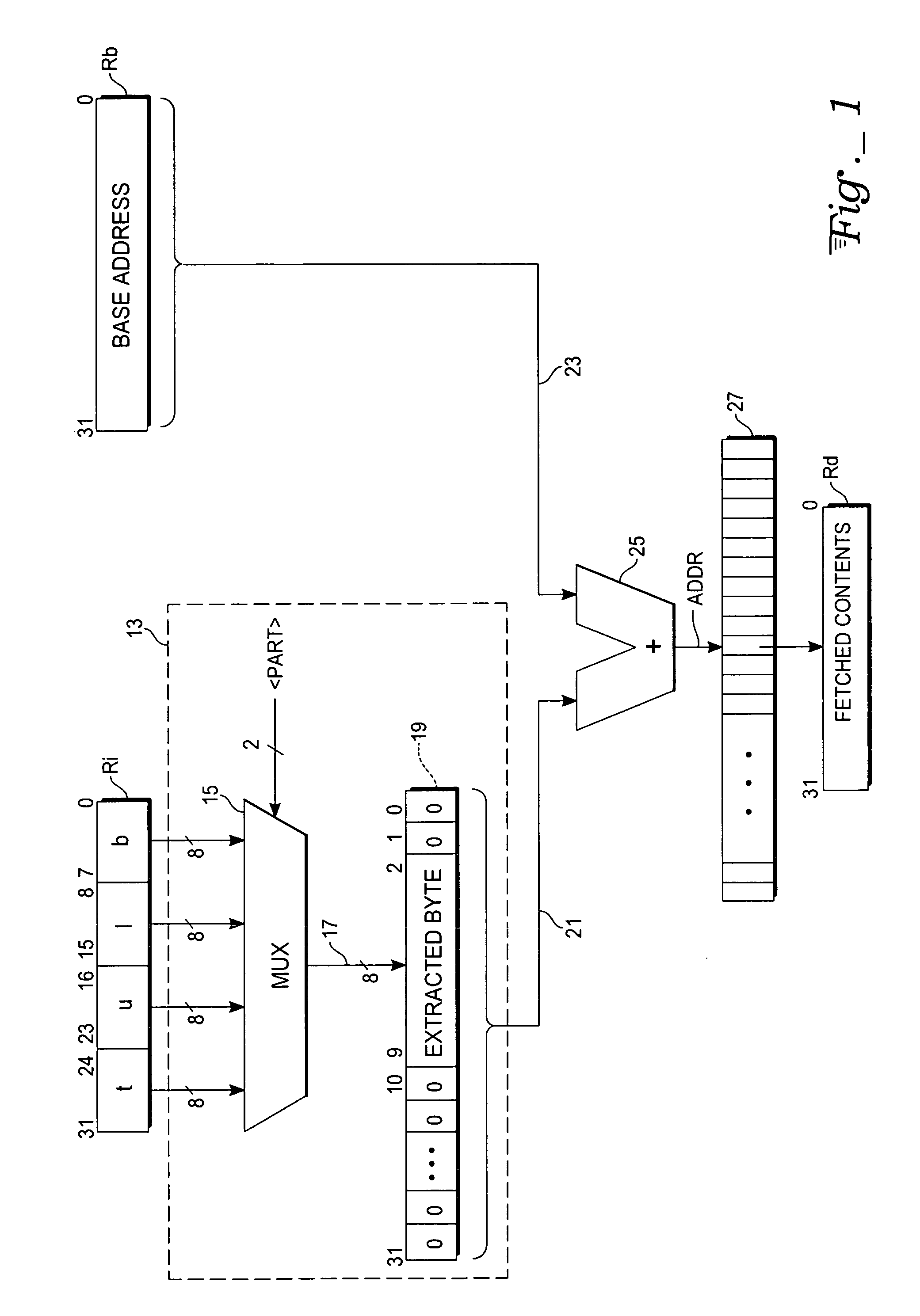Extracted-index addressing of byte-addressable memories
a memory and index technology, applied in the field of index addressing schemes, can solve the problems of reducing efficiency, computationally intensive encryption and decryption algorithms, etc., and achieve the effect of efficient addressing memory and loading data
- Summary
- Abstract
- Description
- Claims
- Application Information
AI Technical Summary
Benefits of technology
Problems solved by technology
Method used
Image
Examples
Embodiment Construction
[0009] With reference to FIG. 1, each of the registers Ri, Rb, and Rd is a wordlength register (e.g., of 32 bits). Of particular interest for the present invention is the extraction of a specified byte from the index register Ri. In the exemplary embodiment shown here, the index register Ri contains four bytes, labeled as a top byte t (bits 31 to 24 inclusive), an upper byte u (bits 23 to 16 inclusive), a lower byte 1 (bits 15 to 8 inclusive) and a bottom byte b (bits 7 to 0 inclusive). The parts {t,u,l,b} of the index register Ri may be identified in an instruction using two-bit byte numbers {3,2,1,0}. Which of the hardware registers in the microprocessor are designated as the index, base and destination registers Ri, Rb, and Rd may be separately identified in an instruction using register numbers, e.g., {0,1, . . . , 15}.
[0010] An instruction may specify a byte from Ri to be extracted, zero-extended, and displaced to the left by a certain number of bits. In prior microprocessor c...
PUM
 Login to View More
Login to View More Abstract
Description
Claims
Application Information
 Login to View More
Login to View More - R&D
- Intellectual Property
- Life Sciences
- Materials
- Tech Scout
- Unparalleled Data Quality
- Higher Quality Content
- 60% Fewer Hallucinations
Browse by: Latest US Patents, China's latest patents, Technical Efficacy Thesaurus, Application Domain, Technology Topic, Popular Technical Reports.
© 2025 PatSnap. All rights reserved.Legal|Privacy policy|Modern Slavery Act Transparency Statement|Sitemap|About US| Contact US: help@patsnap.com



